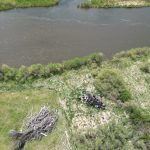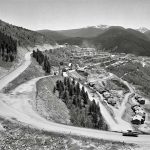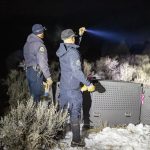Good deeds: Vail InDEED program catching attention elsewhere
Program's simplicity attracting attention from other resort towns

Chris Dillmann | cdillmann@vaildaily.com
- 1,000: Number of deed restrictions Vail hopes to add between 2017-2027.
- $2.5 million: Funding in 2020 for the Vail InDEED program.
- $2.5 million: Vail InDEED purchases through Sept. 30, 2019.
- $66,000: Average cost of a Vail InDEED deed restriction.
Editor’s note: This story is the third part in a five-day series focused on housing issues in the Vail Valley. To view the entire series as it unfolds, visit vaildaily.com/news/home-economics.
VAIL — The Vail InDEED program started during a lunch meeting. The program is now expanding into other mountain resort communities.
The lunch meeting was between George Ruther, then Vail’s community development department director and now-housing department director, and Steve Lindstrom, the longtime chair of the Vail Local Housing Authority. Ruther and Lindstrom have lunch together fairly often.
On this particular day, Ruther was bemoaning the limited number of deed-restricted homes in town that come up for sale every year. The town will buy a unit or a few every year and put those into its deed-restriction program. But it turns out that what’s available often doesn’t meet the needs of eligible buyers.
Ultimately, Ruther asked, “Why can’t people just buy their own houses and we’ll buy the deed restriction?”

Support Local Journalism
And that’s how the Vail InDEED program was born.
A different angle
The program takes a different angle on existing deed-restriction programs. Those programs generally keep values down by capping appreciation. Restrictions also often include residency requirements.

Vail InDEED doesn’t cap appreciation. Instead, the town buys the restriction to knock down the purchase price of a home. That buy-down can make a difference for buyers, particularly when the down payment is calculated.
Another difference is the residency requirement. The only requirement is that the unit has to be the buyer’s residence. There are no caps on the household size or other common restrictions. There’s a requirement that buyers must work in Eagle County an average of 30 hours per week over the course of a year. But, Ruther said, that work requirement applies to all deed-restricted units in Vail.
In the short time since Vail InDEED was adopted, Ruther has made presentations to a number of other resort or tourist-oriented communities.
Ruther has made presentations in Breckenridge, Moab and other communities. The town of Frisco now has a program called Frisco Housing Helps that’s similar to Vail InDEED.
Responding to emailed questions, Frisco Town Planner Katie Kent wrote that Frisco Housing Helps provides a “variety of options to increase the number of deed-restricted units.”
Winter Park Town Manager Keith Riesberg, replying to emailed questions wrote that the town hasn’t yet formally adopted a program similar to Vail InDEED. But, he added, the council “has been open to the concept” and has authorized staff to investigate “any and all” programs to bring more workforce housing to town.
Riesberg wrote that a Vail InDEED-style program is a way to bring more deed-restricted housing to town at a lower cost than building new units.
Using existing housing stock is one of the appeals of Vail InDEED.
Truly ‘green’ housing
“The greenest house we can build is one that’s already built,” Ruther said. Noting the controversy over the Booth Heights workforce housing project in East Vail, Ruther noted that Vail InDEED is “NIMBY-resistant.”
Neighborhood impacts have already taken place, he added.
“The biggest impact from InDEED is that the lights are going to be on in your neighborhood,” he said.
In addition to providing a path to living in Vail, the Vail InDEED program is also an effort to ease a disturbing trend in town. Overall, 90% of home sales are made to second-home buyers. That takes units out of the pool for local residents.
Vail InDEED establishes a new market since restricted homes aren’t going to be priced the way second homes are.
But, Ruther said, Eagle County Assessor Mark Chapin has determined that he doesn’t expect residency requirements to devalue homes that are restricted.
While income doesn’t really figure into the Vail InDEED equation, Ruther said the program has purchased deed restrictions for buyers who are teachers, bus drivers, people who work in the restaurant and lodging industries and people who work in construction.
Some are close to earning the area median income — $86,900 for a four-person household in 2018. But, Ruther added, “We have people earning 160% of (area median income) who struggle to find a place to live.”
Vail InDEED helps people in what Ruther calls the “Missing Middle,” those who can’t qualify for programs tied to income.
Vail InDEED isn’t a cure-all. At some point, there won’t be any more units to buy. And Ruther acknowledged the program isn’t for everyone.
“This only works if there’s a mutual agreement between the town and the seller,” Ruther said. “If there’s a property owner looking to be purely speculative, InDEED isn’t for them. But if your motivation is to live in the community, to put down roots, and you want to be a long-term investor, maybe InDEED is something for you.”
For those the program works for, it makes homeownership more attainable. The program has also found favor with brokers and lenders.
“There were years when Realtors shied away (from deed-restricted property),” Ruther said. “Now they say (this) is brilliant.”
That seems to be response from other communities, too — it’s so simple, it’s brilliant.
Vail Daily Business Editor Scott Miller can be reached at smiller@vaildaily.com or 970-748-2930.










